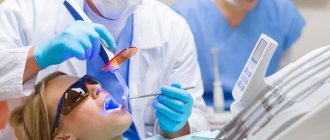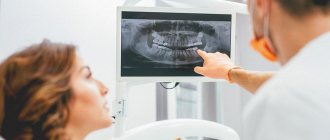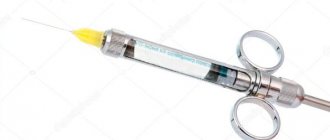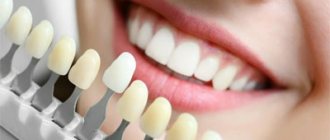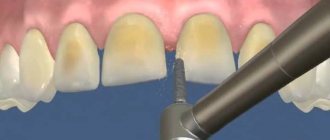We are all afraid of going to the dentist, sometimes it even seems that this fear nests somewhere at the genetic level. But it is impossible to avoid regular visits to the dentist, especially considering that dental diseases directly affect the development of other, much more dangerous diseases.
Dental technology has already changed significantly almost everywhere, and the future, which is almost around the corner, promises us even greater changes in this area of healthcare. Imagine that you receive dentures literally an hour after visiting the dentist, and not after 4 - 5 visits to him? Can you imagine a telemedicine visit to the dentist? What do you think about the possibility of growing new teeth at the age of 80?
Here we would like to briefly introduce you to the 8 main innovations in dentistry.
How form affects content
Appearance and facial expression largely depend on the shape and position of the teeth. This can be seen most clearly by looking at domestic or foreign stars who have certain characteristics of their bite. For example, Anne Hathaway's
wide
and the even, slightly protruding upper row of teeth make her face open and kind. Amal Clooney, who looks similar to her,
:
The upper teeth are more crowded and turn slightly inward, which gives the impression of a purposeful and more solid person.
The characteristic gap between the front teeth (in medical terms - diastema) always remains in fashion and emphasizes individuality; many world celebrities prefer to leave it as is, for example, the famous Frenchwoman Vanessa Paradis:
Ordinary people prefer to close the diastema, since this “defect” also affects diction and facial symmetry.
Basal implantation
Basal dental implantation is considered a relatively new technology; it is not mastered in all Russian dental clinics. This method is used both for complete loss of teeth and for the absence of one or more teeth. Basal implantation allows you to install a dental crown on an artificial root without waiting for it to grow tightly into the bone tissue. This method has become truly revolutionary, since the implantation of conventional titanium implants can last more than one month, and all this time the patient experiences discomfort in the oral cavity.
Initially, basal implantation involved the use of lateral implants with a disc base. Unfortunately, they did not perform as expected. Bone tissue often rejected such an implant. In addition, soft tissue injury sometimes occurred during the installation process. Nowadays, such implants are not used at all in dentistry. Instead, dental surgeons use screw implants with deep threads and a large thread pitch at the bottom of the implant. This ensures the initial tight fit of the structure in place. Artificial dental crowns are very conveniently attached to screw implants. Basal implantation is indicated:
- with partial or complete loss of teeth;
- with partial atrophy of the jaw bone;
- if the patient does not want to increase jaw bone tissue;
- If necessary, urgently install an artificial tooth.
Basal implantation is not used in the following cases:
- the patient suffers from diabetes;
- the patient is HIV-infected;
- the patient is sick with tuberculosis;
- the patient has extremely low immunity;
- the patient suffers from nervous or heart diseases;
- the patient has cancer
- The patient has a tone of the masticatory muscles.
Basal implantation is characterized by extremely rare injury to the soft tissues of the oral cavity. At the same time, implantation of the implant into the jaw bone proceeds very quickly. Suffice it to say that within 3-7 days after implantation the chewing function returns to normal. Practice shows that only in ten cases out of a hundred patients require bone tissue augmentation before basal implantation. The cost of basal implantation is half that of classical implantation in two stages.
In our country, dentists prefer to use Swiss Oneway Biomed implants for basal implantation. They are produced by reputable companies Ihde Dental AG and ROOTT. Much less commonly used in Russia are German shortened Triton Titanium implants, as well as Israeli extended zygomatic implants Noris Medical.
Teeth and balance
How much bite affects posture and how teeth are connected to the spine - the study of this issue is one of the areas of research in modern dentistry.
“As the ideological inspirer and head of the Star Smile company, I pay great attention to this problem,” says Vladimir Lutsenko. “If previously it was believed that malocclusion could be a consequence of spinal curvature, modern research proves that scoliosis can also develop due to unevenly growing teeth that shift the center of gravity of the head relative to the axis of the spine.”
The correct position of the body in space and the distribution of the load on the spine depends on many factors - the structure of the feet, visual perception, the position of the pelvis, the strength of the muscle corset. And not the least role in this structure is played by the human teeth and jaw apparatus. Everything has an impact - the position of the jaws relative to each other, and anomalies in the development of teeth, both congenital and acquired, and installed crowns or implants.
CRISPR
CRISPR is the latest method of genome editing, which nature itself provides us with and which scientists have only now learned to use. Already today, research is being conducted into the possibility of using this method to combat cancer and other serious diseases; it can also be used in dentistry.
Researchers believe that dental specialists will soon be able to identify genes associated with many oral pathologies. And when this becomes known, it will be possible to find a CRISPR solution that will allow you to properly edit the structure of the defective gene and get rid of dental problems in early childhood.
* Dentin is the hard tissue of the tooth, making up its main part.
Materials used: The Verge, Medical Futurists, VRScout, The Guardian, WebMD, Dental Products Report, Nature
Unity and Interconnection
We are accustomed to perceiving teeth as an independent, separate part of the body. But in fact, each tooth is directly connected with various organs and systems of human life. Moreover, this connection is two-way. On the one hand, teeth and bite affect diction, physical and mental health. On the other hand, various diseases or external factors can lead to dental damage. Constant stress or increased stomach acidity, for example, lead to thinning of the enamel.
Also, correct or incorrect tooth growth affects the movement of the temporomandibular joints (TMJ). Outwardly, this is usually not noticeable, but discomfort, clicking of the jaw, and spasms of the neck muscles may gradually appear. Symmetry is broken, and balance adjustment occurs precisely due to changes in the normal movement of joints and muscles.
“We promote orthodontics with aligners not as a separate medical service, but as an important component of medicine as a whole. Many dentists/orthodontists already work together with orthopedists, otolaryngologists, gynecologists and neurologists to improve the quality of treatment and maintain the health of their patients. It is important to take a comprehensive approach to the treatment of any disease, accepting the human body as a single structure of all organs and systems, seeing all their subtle relationships,” says Vladimir Lutsenko.
Symmetry of health
Looking at himself in the mirror, any person sees that his right side is different from his left. For some, this asymmetry is more pronounced, for others it is weaker, but everyone has it.
Have you noticed that faces that are almost symmetrical seem most beautiful to us?
But ideal appearance, like ideal health, is not given to everyone. This is the reality of life, so we all have our own characteristics. Difficulties arise when these features lead to health problems or worsen the quality of life. For example, the loss of even one tooth without timely replacement leads to the fact that the body begins to fill the resulting void, compensating for the imbalance of one system with imbalances in others.
This is a long, but always destructive process - first there is discomfort, then pain increases, and suddenly we realize that “then the paws are aching, then the tail is falling off.” An integrated approach and timely involvement of different specialists can largely restore lost health.
Smart toothbrush
You won’t surprise us with “smart” electronic devices, and now these electronics have reached the bathroom. The Kolibree “smart” electronic toothbrush, together with the corresponding application, allows you to remain confident that you are brushing your teeth correctly, and also offers children fun games that teach them to brush their teeth correctly and regularly.
Philips also released its own brush that works via Bluetooth, including it in its already fairly large line of smart consumer medical devices. It uses a set of sensors to track how you brush your teeth in real time. And it does it extremely simply and clearly. The app shows a 3D map of the user's teeth, showing the teeth they are currently brushing and telling them if they have been brushing too little or too long. It also warns of too much pressure or a harsh cleaning style.
Healthy facial beauty - macro aesthetics
One of the trends in modern dentistry is macroesthetics. Not only health comes to the fore, but also the appearance of the face - proper adherence to proportions.
Previously, there were two directions in aesthetic dentistry - white aesthetics, which determines the shape and color of teeth, and red aesthetics, which is responsible for the health and beauty of the gums. Now they are united together - the condition of the teeth and gums should be healthy and look harmonious.
Doctors who monitor major global trends, for example, know what ratio of upper lip to nose position will be ideal for a particular patient. To improve aesthetics, dentists work in teams with surgeons, implantologists, and periodontists.
“Simply by correcting your bite, you can improve the appearance of your face and even make it look younger. Trust our experience,” says Star Smile CEO Vladimir Lutsenko. You can see what changes will happen with a smile thanks to modern diagnostics and unique technology - a virtual 3D setup.
Modern digital technologies for correcting bites using aligners provide a minimum of intervention. The prognosis of the treatment result and its timing is simulated by a computer, which allows you to correct the appearance of your teeth quickly and, most importantly, accurately. The minimum treatment period for aligners can be only 4 months.
“In Russia at the moment the technology is becoming more and more widely used. Star Smile has already covered more than 100 Russian cities with doctors and does not plan to stop there.
And when patients come to us with a similar problem, we provide orthodontic care on our part and help patients find appropriate clinics to solve the problem of smile aesthetics in a comprehensive manner,” explains Vladimir Lutsenko.
New hygiene products
Particular attention should be paid to new products in the field of oral hygiene. Previously, in-office teeth cleaning could not be done more than once every 3-4 months. Now, thanks to the use of new technologies, this can be repeated at least every 30 days. Due to such hygiene, the constant whiteness and shine of teeth will be maintained. In fact, the technique is borrowed from pediatric dentistry. The procedure involves deep polishing and mineralization of teeth.
It is worth considering that office cleaning should be repeated monthly only for those who have some kind of periodontal disease, or as prescribed by a doctor. If your teeth are healthy, it will be enough to do it once every six months.
Article on the topic
How are dentists scamming us? What you need to know so as not to be left without money
Health instead of gloss
All over the world, and even in Russia, TV shows with the transformation of women, from such a Cinderella immediately into a beautiful Princess, are very popular. But this “one-time shine” has its own catch.
Yes, clothes, hairstyle and makeup transform for a while, but they are not enough to gain and develop confidence. But a beautiful smile and healthy, straight teeth are something that will not wrinkle, become frayed, or wash off. This is something that will always be with you in any condition and in any weather. The same applies to cosmetic beauty injections, which sometimes lead to sad consequences.
So before experimenting with your face, consult a good dentist/orthodontist. Perhaps straightening your teeth is enough to eliminate asymmetry and change your appearance.
Zirconium dioxide implants
Artificial roots made of zirconium have replaced metal ones and have a high level of biocompatibility with jaw tissue. The material is resistant to mechanical stress, matches the aesthetics of the natural root, and integrates well into the jaw tissue. Has the following properties:
- strength;
- durability;
- hypoallergenic.
Unlike titanium alloy, zirconium does not release metal particles into nearby tissues.
Alternative to pills and surgery
Headaches, migraines, neck stiffness, and sharp back pain often have an unknown cause. People have been treated by neurologists and neuropathologists for years, mainly because pain is temporarily relieved with the help of injections and other manipulations. The appearance of these people is also transformed, the face becomes tense, and a frozen mask is formed.
“Almost a quarter of these patients do not even know that they need the help of an orthodontist,” says Vladimir Lutsenko. “Star Smile technology can improve their health and change their quality of life!” The connection between malocclusion and postural disorders is very strong and one must be able to break it; aligners successfully cope with this task.
A striking example is when a patient does not pay attention to caries and tooth decay until it hurts. And in such cases, it happens that patients endure until the last. Or they don’t understand why the teeth suddenly became crooked (and it was the wisdom teeth that began to erupt). So they suffer.
Comments
[…] be sure to read about the latest trends in the development of implantation in recent […]
How to treat gingivitis. Causes of the disease and methods of treatment. (06/20/2018 at 09:01) Reply to comment
[…] by 3 x”, then we recommend that others pay attention to the trends in implantation that have taken hold in 2022. Fill in defects [...]
All-on-3 prosthetics, description and features of the method (07/18/2018 at 09:00) Reply to comment
[…] on a computer, involves a careful 3D modeling process. Working through allows you to avoid mistakes and get [...]
How to insert teeth in less than a week using innovative methods. (09/01/2018 at 09:01) Reply to comment
Write your comment Cancel reply
What does a dentist do?
He solves the problem he sees - closes the hole by installing a filling or, as a last resort, removes the decayed tooth. But the process has already started, the position of the teeth has changed and this has led to other invisible but tangible problems. It's like walking in a vicious circle - not seeing the source of the problem, its center.
Diagnostic capabilities
“During the management of the Star Smile company, I had certain professional correlations and interactions with doctors; our Star Smile School trains specialists both through off-line seminars and via the Internet (online learning platform).
Doctors explain to me that when they look at people, they notice: “here the jaw is tense, here the neck is stiff, but these expression wrinkles can be removed by correcting the bite in four months of wearing mouth guards.” Aligners take away the “work and bread” from braces and are used every year for more and more malocclusion pathologies. But in order to guarantee successful treatment, for a more accurate diagnosis it is necessary to contact an appropriate specialist and, of course, in person.”
Modern diagnostic tools, such as 3D computer diagnostics, CBCT, registration of bite and tooth compression force, allow you to make an accurate diagnosis and begin the first stage of treatment. This may be preliminary therapy before the start of orthodontic treatment. It is necessary to sanitize the oral cavity and approach the correction of the bite with healthy teeth.
The next stage is to correct the bite using special orthodontic trays. By the way, aligners do this almost unnoticed - they are the most aesthetic of all treatment structures presented on the orthodontic market in the world.
Treat caries without a drill
Yes Yes! You will no longer hear the whistling of the drill! Now the carious cavity is cleaned in completely different ways. For example, it is treated with special compounds (usually gels) that break down all infected areas of the tooth. After treatment using special instruments, the doctor removes all dead layers, after which he introduces quick-hardening fillers into the cavity. With this approach, the tooth is preserved as much as possible and no anesthesia is required at all.
To carry out professional oral hygiene, the air-kinetic method (AirFlow) is used. The essence of the method is that a mixture of water, air and a special powder is supplied from a special nozzle under high pressure. Thus, soft plaque particles are knocked down and removed.
A little bit of a wizard
Vladimir Lutsenko, the founder and head of the Russian company producing bite-correcting mouth guards - or aligners - Star Smile, aims to make high-quality orthodontic treatment accessible to most patients, including children.
This is possible thanks to the introduction and development of modern technologies and special Star Smile programs:
- through participation in all leading Russian and international dental conferences,
- through speeches to students at leading dental universities in the country,
- through the publication of both popular materials and medical articles.
- and also through the training of orthodontists and dentists (!!) in Russia and neighboring countries through our Star Smile School.
Today, Star Smile technologies in the field of orthodontics cover more than 100 cities
Russia, and, importantly,
more than 25 countries
of the world, including the USA, Japan, Israel, Australia, and most European countries.
“Beauty and health improve the quality of life of any person, and a beautiful smile especially. And I’m glad that I can contribute to the development of these opportunities for everyone,” says Vladimir Lutsenko.
Augmented Reality
The University of Strasbourg in France is using augmented reality for coursework and practical work to demonstrate dental models to students and allow students to compare the prosthetics they create with reference models. Faculty at this university believe that in just a few years, augmented reality technology will completely revolutionize dental education.
A similar device, called the DentSim Simulator, was developed by Image Navigation - it uses augmented reality technology for simulation, allowing students from all over the world to hone their skills. This training system has already been used by 10 thousand dentists from 17 countries.
Latest achievements in Israeli dentistry
Nowadays, Israeli dentists implant artificial roots using their own technology. Its main difference is the long duration of the operation. It usually lasts from 4 to 8 hours.
Painkillers are introduced gradually and using Sleeper One technology. This ensures maximum comfort for the patient. The first effect of anesthesia begins only 40 minutes after the start of the injection. At the same time, by the beginning of the operation itself, the nerve endings in the jawbone area are completely blocked.
Implantation of artificial roots in Israel is done only in inpatient departments of dental clinics. The time for postoperative rehabilitation there lasts at least three days. During this time, the patient should be absolutely at rest and strictly follow the doctor’s recommendations. Postoperative drug treatment is carried out strictly individually and taking into account the characteristics of the patient’s body. In most cases, dentists prescribe anti-inflammatory and antibacterial agents.

